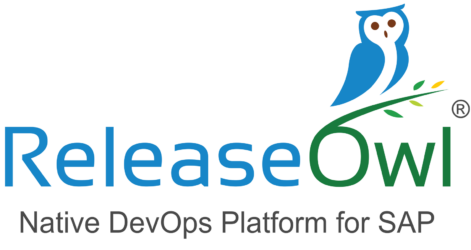SAP Disaster Recovery
Filter By
Browse By
- SAP Analytics and AI
- SAP Application Development and Integration
- All SAP Application Development and Integration
- SAP ABAP
- SAP ABAP Development Tools
- SAP ABAP Test Cockpit
- SAP API Management
- SAP BAPI
- SAP Basis
- SAP BRF
- SAP Business Application Studio
- SAP CMS
- SAP Design Studio
- SAP Development Tools
- SAP DevOps
- SAP EAI
- SAP EDI
- SAP Extension Suite
- SAP Fiori
- SAP Fiori Elements
- SAP Integration Suite
- SAP Low Code Application Development
- SAP Low Code Automation
- SAP Netweaver
- SAP Release Management
- SAP UI5
- SAP Web Application Server
- SAP Web IDE
- SAP Business Process Management
- SAP Center of Excellence
- SAP CIO
- SAP Customer Experience
- SAP Data and Data Management
- All SAP Data and Data Management
- SAP BW
- SAP BW/4HANA
- SAP Crystal Reports
- SAP Data Archiving
- SAP Data Center
- SAP Data Governance
- SAP Data Integration
- SAP Data Migration
- SAP Data Quality
- SAP Data Services
- SAP Data Strategy
- SAP Data Visualization
- SAP Data Warehouse Cloud
- SAP DMS
- SAP Document Control
- SAP EIM
- SAP ETL
- SAP ETL Tools
- SAP HANA
- SAP HANA Administration
- SAP HANA Deployment Infrastructure
- SAP HANA Studio
- SAP Master Data
- SAP Master Data Governance
- SAP MDM
- SAP Enterprise Architect
- SAP Enterprise Asset Management
- SAP ERP
- SAP Finance
- All SAP Finance
- SAP Accounting
- SAP AR AP
- SAP Asset Accounting
- SAP Billing Systems
- SAP BPC
- SAP BRIM
- SAP Cash Management
- SAP Central Finance
- SAP Controlling
- SAP COPA
- SAP Cost Center Accounting
- SAP Currency Risk
- SAP e-invoicing
- SAP FICO
- SAP Finance Automation
- SAP Advanced Financial Closing
- SAP Financial Consolidation
- SAP Financial Planning
- SAP FX Risk
- SAP General Ledger
- SAP Global Tax Management
- SAP Hyperion
- SAP Order to Cash
- SAP Payment Processing
- SAP Profitability Analysis
- SAP Rebate Management
- SAP S/4HANA Finance
- SAP SWIFT Compliance
- SAP Treasury Management
- SAP Universal Journal
- SAP Governance Risk and Compliance
- SAP Human Capital Management
- SAP Intelligent Technologies
- SAP Platform and Technology
- All SAP Platform and Technology
- SAP Business Technology Platform
- SAP Cloud
- SAP Cloud Connector
- SAP Cloud Integration Platform
- SAP Cloud Migration
- SAP Cloud Platform
- SAP Cloud Providers
- SAP Cloud Strategy
- SAP Digital Signature
- SAP Container Platform
- SAP HANA Enterprise Cloud
- SAP Digital Asset Management
- SAP Smart Forms
- SAP HEC
- SAP Digital Integration Hub
- SAP Hyperscalers
- SAP Infrastructure
- SAP Messaging
- SAP Quality and Testing
- SAP Security
- SAP Spend Management
- SAP Supply Chain Management
- All SAP Supply Chain Management
- SAP APO
- SAP Asset Management
- SAP Business Network
- SAP Digital Manufacturing Cloud
- SAP Digital Twin
- SAP EWM
- SAP IBP
- SAP Inventory Management
- SAP Label Printing
- SAP Logistics
- SAP Manufacturing
- SAP Manufacturing Automation
- SAP MES
- SAP MII
- SAP MM
- SAP MRO
- SAP MRP
- SAP Order Management
- SAP Plant Maintenance
- SAP PLM
- SAP Production Planning
- SAP S&OP
- SAP SD
- SAP SPM
- SAP Supply Chain Planning
- SAP Track and Trace
- SAP Transportation Management
- SAP System Administration
What is Disaster Recovery?
Disaster recovery is an organization’s method of regaining access to and functionality for its IT infrastructure following disruptive events, such as major equipment failure, natural disaster, cyberattack, or pandemic. It relies on the backup of data and computer processing capabilities at a remote location not affected by the disaster. In a disaster, the organization can restore data and computing functions to continue operations.
Disaster recovery focuses on IT systems supporting critical business functions instead of business continuity, which involves keeping all essential aspects of a business functioning despite significant disruptive events. Priorities and recovery time objectives should be developed during the business impact analysis. Technology recovery strategies should be designed to restore hardware, applications, and data in time to meet the business recovery needs.
What is Disaster Recovery?
Disaster recovery is an organization’s method of regaining access to and functionality for its IT infrastructure following disruptive events, such as major equipment failure, natural disaster, cyberattack, or pandemic. It relies on the backup of data and computer processing capabilities at a remote location not affected by the disaster. In a disaster, the organization can restore data and computing functions to continue operations.
Disaster recovery focuses on IT systems supporting critical business functions instead of business continuity, which involves keeping all essential aspects of a business functioning despite significant disruptive events. Priorities and recovery time objectives should be developed during the business impact analysis. Technology recovery strategies should be designed to restore hardware, applications, and data in time to meet the business recovery needs.
What is SAP Disaster Recovery?
SAP offers standard and enhanced disaster recovery service for SAP Business Technology Platform (SAP BTP), Neo environment. Data backups are stored at a disaster recovery site and contain all data stored in the SAP BTP’s data management and document services. According to SAP, any data not stored in these services cannot be recovered.
The SAP BTP Enhanced Disaster Recovery service provides asynchronous data replication to a remote disaster recovery region to improve the time for recovery. The service requires hardware setup and covers production applications running on SAP BTP in disaster recovery-enabled subaccounts. The setup requires configuration steps that the organization and the dedicated SAP team must perform in advance.
Further Resources for SAPinsiders:
Considerations for Disaster Recovery and Automated Failover Clusters for SAP HANA Infrastructures. In this SAPinsider Q&A, SUSE’s Peter Schinagl, Technical Architect, and Markus Gürtler, Technical Alliance Manager, answer questions regarding disaster recovery scenarios for SAP HANA infrastructure, automation solutions for failover, and system replication.
A Step-by-Step Configuration Guide for Disaster Recovery. In this article, Muhammad Abdul Jamil, SAP Basis Administrator at the Orient Group of Companies, provides a detailed step-by-step guide on setting up a standby database of the SAP production server for disaster recovery.
Other vendors offering SAP disaster recovery services: AWS, Commvault, Google Cloud, NetApp, and Syntax.
322 results
-

 Premium
Premium
How SAP ERP Combats the Challenges of Global Accounting and Financial Reporting Standards
Reading time: 16 mins
Review some SAP ERP solutions, functionalities, and capabilities that you can use to meet the challenges of specific International Financial Reporting Standards (IFRS) and International Accounting Standards (IAS) requirements, including ones that cover revenue, accounting policies, operating segments, and more. Key Concept International Accounting Standards (IAS) and International Financial Reporting Standards (IFRS) guide global financial...…
-

 Premium
Premium
Where Is the D-U-N-S Number in Your SAP System?
Reading time: 4 mins
Find where an important but confusing number is kept in various parts of your SAP system. Of all the many standards that are commonly used in SAP systems (such as ANSI, EDIFACT, and SAML), one of the least-well-known is the Data Universal Numbering System (D-U-N-S) number. It is a unique, randomly-generated, nine-digit number that is...…
-

 Premium
Premium
Use SAP Learning Solution to Manage Your Extended Learning Community
Reading time: 12 mins
SAP provides a major extension for the SAP Learning Solution that enables companies to offer learning for external employees or groups such as suppliers, partners, or customers. See the business background, the usage scenarios in different industries, and the key features in detail, as well as the technical architecture and prerequisites. Key Concept With the...…
-
-

- SAP Finance
 Premium
Premium
Troubleshooting Payroll Problems
Reading time: 28 mins
Payroll implementations often face challenges with operational and other run-time issues. Payroll users chase paycheck deadlines on a weekly basis while trying to avoid errors. Learn how to analyze and solve these issues while developing a maintenance strategy. Key Concept When payroll cycles are managed within SAP ERP HCM, preventive maintenance or pre-payroll controls are...…
-

 Premium
Premium
Archiving Process, Phase 1: Setting Up Your System
Reading time: 9 mins
Understand how the archiving process has changed in SAP NetWeaver BI 7.0. Find out the three steps you can take for archiving, then see how to go about the first part of the process: setting your system up for archiving using Archive Development Kit. Key Concept Every company must address archiving eventually. By reducing the...…
-

 Premium
Premium
Best Practices for Integrating Warehouse Automation and SAP WM
Reading time: 12 mins
SAP Warehouse Management’s (SAP WM’s) continued growth, coupled with advances in warehouse automation, has led more companies to try to improve efficiencies by integrating SAP WM with warehouse automation. Find out some best practices for the integration process. Key Concept To improve efficiencies in the warehouse, companies often turn to automation. Warehouse automation comes in...…
-

- SAP Payroll
 Premium
Premium
Managing the Challenges of Payroll Application Maintenance
Reading time: 14 mins
Companies that implement SAP payroll also have to plan and execute a strategy for application maintenance of the payroll systems. When implementing it globally, they have even bigger challenges for keeping the payroll applications up to date with regulatory and other changes. Compared to other applications, payroll applications need higher maintenance and upkeep due to...…
-
-

 Premium
Premium
Apply Quantity-Based Overhead Simply and Accurately via Costing Sheets
Reading time: 12 mins
SAP R/3 offers more refined methods to apply overhead costs than most people use. One is the quantity-based overhead method, in which the amount charged depends on the production quantity based on a given rate. Activity consumption can be used flexibly to charge overhead based on effort or only at standard consumption quantity. Learn an...…
-

 Premium
Premium
Best Practices for Secure Programming in SAP NetWeaver
Reading time: 16 mins
Review best practices that you should employ in application development with particular emphasis on the functionalities available in SAP NetWeaver that guarantee secure programming. Key Concept Secure programming aims at enforcing security and control in the life cycle of applications by circumventing the perpetration of malicious acts on programs. You can accomplish this via the...…
-

- SAP Workloads
 Premium
Premium
Get Started with Cloud Computing and SAP Today
Reading time: 18 mins
Thinking about cloud computing? Not sure how to get started? Discover the different types of cloud computing models with a focus on Infrastructure as a Service. Included are immediate SAP use cases for applying cloud technology, SAP-specific challenges and support considerations, and guidelines for building your own hybrid cloud. Key Concept Infrastructure as a Service...…
Become a Member
Unlimited access to thousands of resources for SAP-specific expertise that can only be found here.
Become a Partner
Access exclusive SAP insights, expert marketing strategies, and high-value services including research reports, webinars, and buyers' guides, all designed to boost your campaign ROI by up to 50% within the SAP ecosystem.
Upcoming Events
Related Vendors
Your request has been successfully sent


